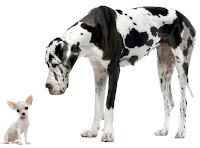The New Semantic Web wave (2)
About Twine:
Really short video about Twine.
Presentation on the Semantic Web and Twine.
Techcrunch review of Twine.
RoughType review of Twine.
O’Reilly Review of Twine.
ReadWriteWeb review of Twine.
About Powerset:
Not too much posts about them lately. Wrote about them before here and here (and pointed to other posts on them). I’ll be posting again about Powerset soon!
About TrueKnowledge:
ReadWriteWeb review of TrueKnowledge
Also check out this panel discussion on the Semantic Web at the Web 2.0 summit titled ‘The Semantic Edge’ with demo’s (although you can’t see them…) of Radar Networks (Twine), Powerset and Metaweb (Freebase).
Metaweb kicks of with a demo of Freebase. It’s about opening up the silo’s of data. And creating interconnections between them. We want to be able to operate over multiple systems. Freebase is a database with all kinds of data in it with an api that can be used to for lots of different applications. The data is put in their socially, shared, and is corrected socially. This data is open and can be used for whatever application you can come up with.
Powerset is a search engine based on natural language technology. This technology has only become possible in the last few years. Both technologically and computationally. Powerset uses Freebase, they imported it. The more knowledge there is the better the system gets. They’re building on the fact that information and data is becoming ever more connected.
The Radar Network’s presented Twine. We have a problem with information, managing information. This can result in information overload. But even if you don’t experience this, it’s hard to manage your information that spread out all over the place. Twine is built by 27 people.
Twine is about knowledge networking. As you work in Twine, it learns, it builds a profile of the user and your relations. It results in a unified view of your information.
When you put (you can drag-and-drop) information in it analyzes it and adds semantic tags too it. This data can also be exported in RDF format. When you add a URL is goes an mines that site and looks for new inferences.
You can share your Twined information with others (friends, teams, groups, etc.).
When you search using Twine, you can use the semantic tags. It’s a new kind of social social search. It’s based on your information, your data, your social contacts, your interests, etc.
Discussion
In the discussion a remark was made by Metaweb saying ‘Semantic Web’ stands for something in the past that was tried (standards etc), but failed. What’s happening now is new.
Tim O’Reilly sees them all as ‘platform players’, offering reusable semantically annotated data. O’Reilly asked a good question: where does the one end and the other begin? We didn’t get a real answer to that question.
So what is this new movement all about? Spivack says: “It’s the wisdom of crowds and the wisdoms of computers working together.”
ReadWriteWeb also blogged this session here.



Comments
Post a Comment
Please leave a comment! Just log in using one of the formats and if you want me to get back to you. Otherwise comment anonymously.